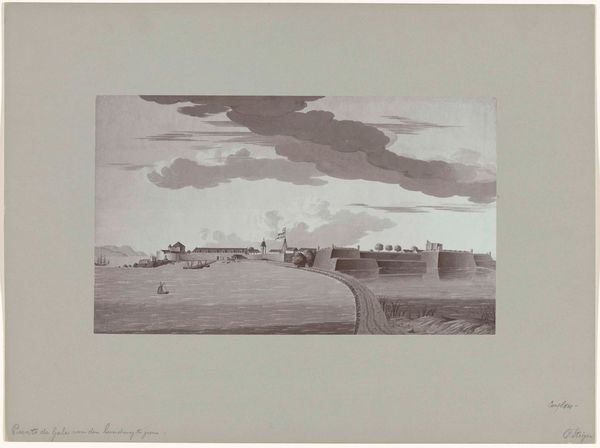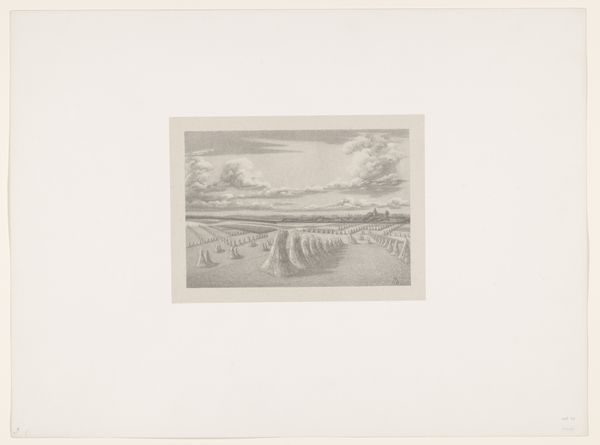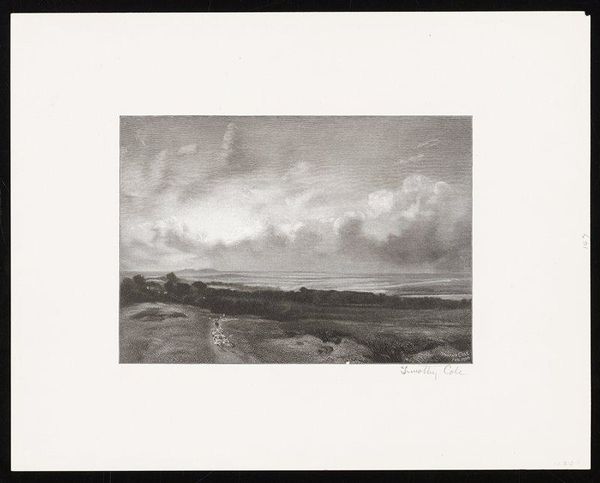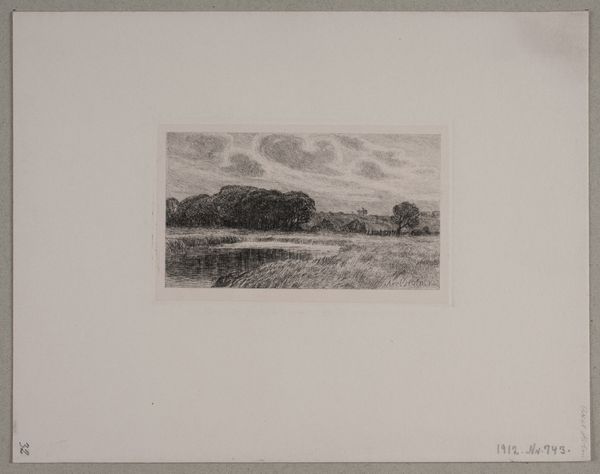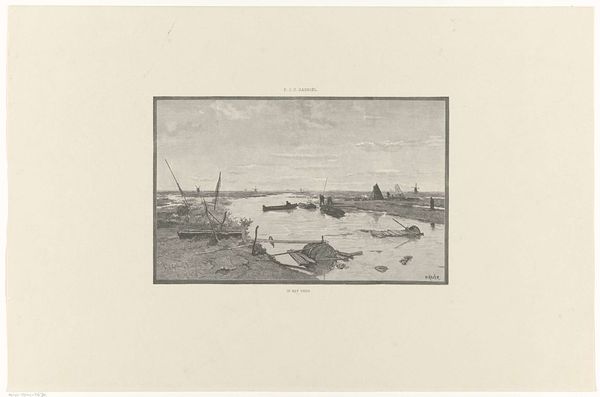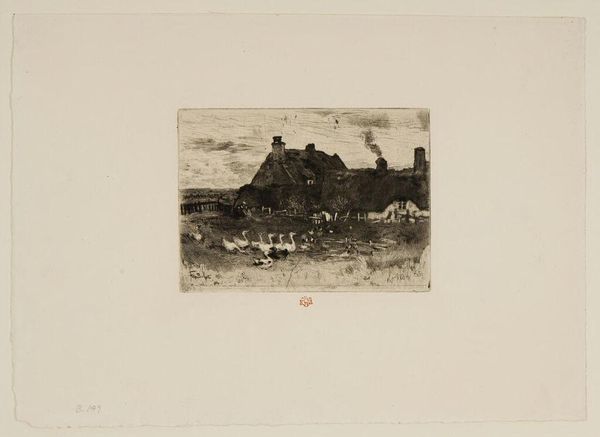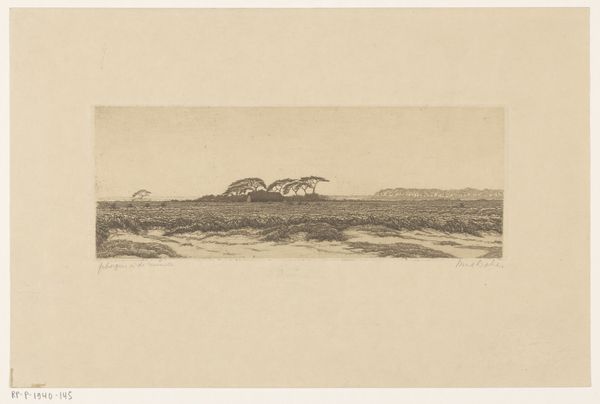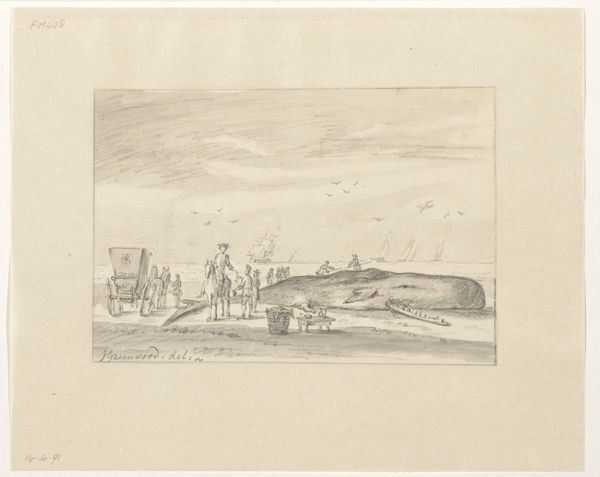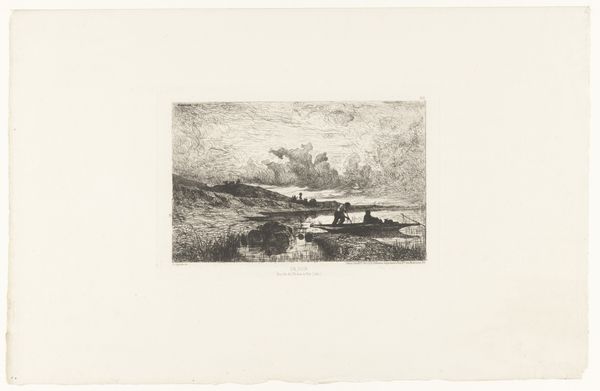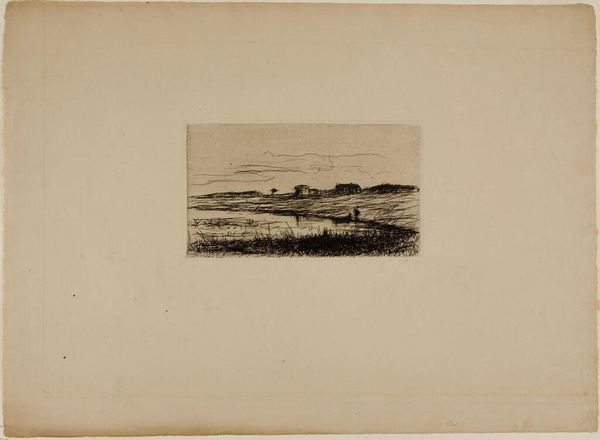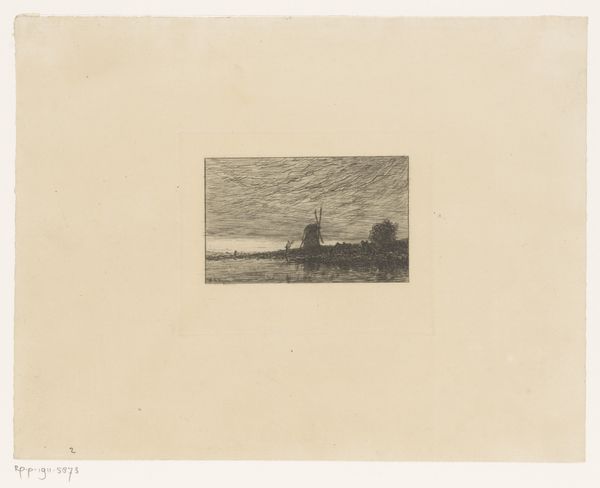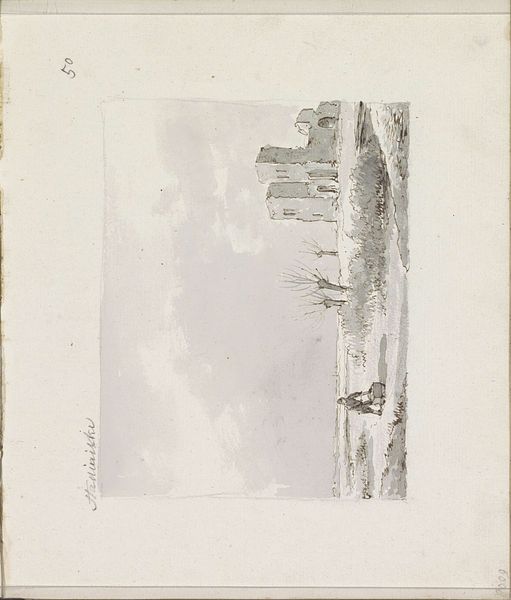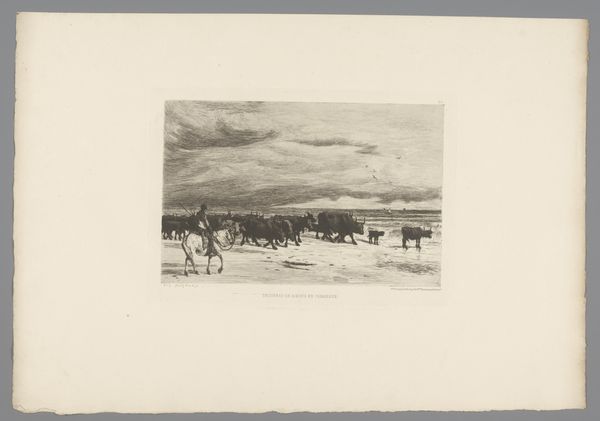
drawing, print, etching
#
drawing
# print
#
etching
#
landscape
#
orientalism
#
line
#
cityscape
Dimensions: height 158 mm, width 300 mm, height 323 mm, width 440 mm
Copyright: Rijks Museum: Open Domain
Editor: This etching, "Het Fort Manaar van de rivier gezien door C. Steiger," dating from 1890 to 1910, gives a fascinating look at a fort city from afar, very picturesque. What strikes me most is how the style evokes older cartographic prints. How do you interpret this work, considering the period it was created in? Curator: That’s an astute observation! It's critical to recognize this print through the lens of late 19th and early 20th-century Orientalism. While the composition mimics the visual language of cartography, it’s less concerned with geographic accuracy, and more interested in crafting a vision of the “Orient” palatable to a Western audience. The careful details and serene mood work to naturalize European colonial power by presenting a harmonious and easily surveyed landscape. What sort of politics might the “picturesque” obscure here, do you think? Editor: So the aesthetic choices served a particular purpose! I hadn’t considered how this seemingly objective view is actually projecting power dynamics. It feels… curated, in a loaded sense. Curator: Precisely. Think about who commissioned or bought these images. Was it meant for scientific use or commercial consumption, like prints or books meant for display? This fort, probably the Dutch Fort in Sri Lanka, is not just a physical location; in this print it’s transformed into a symbol, both a display of power and a tourist attraction for consumption. Recognizing this reframes how we see the artistry itself. It compels us to examine art's role in reinforcing historical narratives. Editor: I see what you mean now. The 'exotic' element is intentionally highlighted, serving a specific political and commercial purpose back then. It really changes how you look at such landscape art! Curator: Exactly. Hopefully now when looking at these landscape paintings, we can recognize it for the loaded socio-political commentary that it often conveys.
Comments
No comments
Be the first to comment and join the conversation on the ultimate creative platform.
